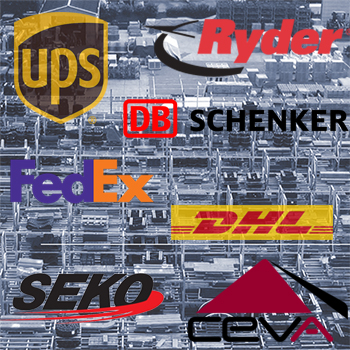Armstrong & Associates Releases “Keep it Running: The Quintessential Spare Parts Logistics Report”

The report includes global spare parts logistics market estimates, which are further calculated at the country/region level and for major industry verticals, and details the logistics capabilities of seven leading providers.
Spare Parts Logistics (SPL) is an essential part of global supply chain management.
To update users, Armstrong & Associates has released a report called “Keep it Running: The Quintessential Spare Parts Logistics Report.”
The report provides global Spare Parts Logistics market estimates and details the Spare Parts Logistics capabilities of seven leading providers.
The report is ideal for shippers seeking a spare parts logistics provider, for providers that wish to benchmark service offerings, or for researchers in need of market sizing data.
Global SPL Market Estimates
Armstrong & Associates estimates the global SPL market is $52.7 billion a year, representing approximately 6.9% of total Third-Party Logistics (3PL) revenue. Since our last publication of the report, we have seen a 2008-2016 compound annual growth rate (CAGR) of 5.5%.
The report includes global SPL market estimates, which are further calculated at the country/region level and for major industry verticals. The Spare Parts Logistics market is driven by high-value manufactured products and their maintenance, particularly in the Automotive, Industrial, and Technological industry verticals.
The Automotive industry accounts for $18.1 billion, or 34.3%, of total SPL revenue. This is closely followed by the Technological industry ($17.7 billion, or 33.5%). Industrial accounts for $10.9 billion (20.7%) of total SPL revenue. Elements and Healthcare make up smaller portions of the total: $3.9 billion (7.4%) and $2.1 billion (4.0%), respectively.
Leading 3PL Spare Parts Logistics Providers
Shippers rely on 3PLs to optimize short turn-around inventory fulfillment while minimizing costs. To support shippers' SPL needs, 3PL providers offer services such as parts distribution, order fulfillment, inventory management, reverse logistics, network and parts planning, and transportation and warehouse management.
Additionally, some providers offer repair and refurbishment services, call center staffing, field technician training, and value-added services. 3PLs meet shipper needs with their strategically positioned global networks, integrated IT systems, value-added services, reporting and analytics, flexibility, scalability, and standardized processes.
For each of the eight leading providers profiled in the report, including UPS, FedEx, DHL, and DB Schenker, we describe services, markets and industries served, technology supporting SPL activities, customers, and case studies.
Network scope is reported, including control tower and forward stocking locations. UPS, for example, has more than 1,000 forward stocking locations and five global control towers.
Related: 3 Tech Trends Shaping the Future of Global Logistics
Article Topics
Armstrong and Associates News & Resources
Armstrong report takes a look at a ‘downshifting’ in the global 3PL market Sizing up the 3PL Market with Evan Armstrong Ecommerce and Outsourcing Fueling Revenue Growth for Third-Party Logistics Providers Uber Freight Makes Official Entrance into Trucking Armstrong & Associates 2017 Top 50 U.S. and Global Third-Party Logistics Providers Keep it Running: The Quintessential Spare Parts Logistics Report Armstrong & Associates Releases “Keep it Running: The Quintessential Spare Parts Logistics Report” More Armstrong and AssociatesLatest in Transportation
Baltimore Bridge Collapse: Impact on Freight Navigating Amazon Logistics’ Growth Shakes Up Shipping Industry in 2023 Nissan Channels Tesla With Its Latest Manufacturing Process Why are Diesel Prices Climbing Back Over $4 a Gallon? Luxury Car Brands in Limbo After Chinese Company Violates Labor Laws The Three Biggest Challenges Facing Shippers and Carriers in 2024 Supply Chain Stability Index: “Tremendous Improvement” in 2023 More Transportation













